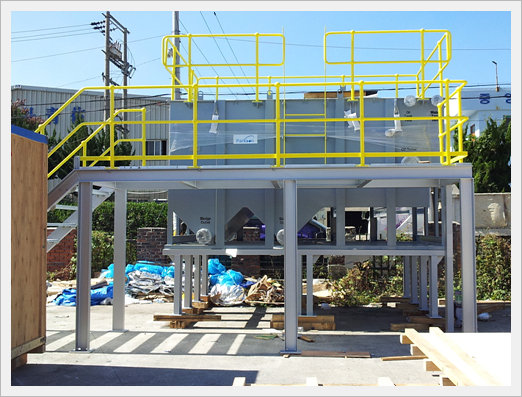The earth contains many resources. Water is one of the most important substances in life. However, only about 3% of the water on earth is fresh water, which can be used for human and animal consumption. Therefore, it is crucial for us to find ways to treat and decontaminate polluted waters. One of the best methods is to use oil water separator systems.
How do you know about this kind of water treatment system? Do you know how many types of these systems are available? Do you know the differences between these systems? Here, this passage will provide those information for you.
What is an oil water separator?
An oil water separator is a piece of equipment utilized to treat and decontaminate wastewater, which makes it can be safely discharged to permitted discharge points, such as sewers. It removes oil, grease and hydrocarbons, leaving only harmless water. The wastewater can then be safely discharged into the drainage system.
There are several different types of oil water separators. Each has different capacities, and they are suitable for different industrial and commercial applications. They can be utilized to deal with various contamination found in water, such as free slicks, emulsified oils, dissolved oils and suspended solids.
Types of Oil Water Separators Systems
Different types of wastewater often require different kinds of oil water separator systems to effectively treat water. The four common types of oil-water separators are:
Conventional Gravity Separator System (API)
Traditional gravity separators, also known as API separators, use gravity to separate oil and other pollutants from water. They work because oil is lighter or less dense than water. Therefore, when oily water is put into the separator, the oil rises to the top, the solids and sediments sink to the bottom, and the water remains in the middle. The oil is then skimmed from the top and treated, while water flows freely through an outlet on the side of the tank for further processing or release to the environment. The solids and sediments are scraped from the bottom into a sludge pump for processing.

Parallel Plate Gravity Separator System (CPI)
In this type of CPI oil water separator system, corrugated plates made of lipophilic materials are placed in a tank parallel to each other, and the space between the tanks is about 6-12 mm. Water and oil are then allowed to flow through the storage tank and between these plates. The oil in the water is attracted and stuck to the plates.
As an increasing number of oil droplets attach, they form larger droplets and eventually grow to the surface in which they're collected and discharged into a used oil tank. The water, free of petroleum, is permitted to keep on flowing through the tank and to some sterile water socket, where it could subsequently be released to other applications.
Hydrocyclone Oil Water Separator System
A hydrocyclone oil water separator system uses an active vortex that is generated when oil-containing water is injected into the tank at an angle. The centrifugal forces accelerate as they form a whirlwind or spiral shape. Since water is denser than oil, water is pushed to the outer edge and falls towards an outlet that causes further processing or entry into the environment.
The lighter oil is forced to move towards the center and into the waste tank from the top upwards. This type of oil water separator is suitable for efficient oil removal from water, like applications in factories and in highly polluted waters.
Flotation Separator System
The flotation separator is commonly referred to as DAF (Dissolved Air Flotation) oil water separator, which uses dissolved air to increase the rate of oil rise. In the separator, oily water is mixed with water filled with dissolved air to form small air bubbles. The oil in the water adheres to these bubbles and is brought to the surface of the separator, where oil, sludge and solids are skimmed and stored in another tank. Any heavy rising solids or sediments will sink to the bottom and be collected in the gutter. DAF wastewater then passes through an outlet and is ready for reuse or further filtration.
Each of these systems separates water and oil via slightly different procedures, making some of them better than others based on their intended usage for a particular business or industry. When factories, restaurants, commercial businesses, and marine industries choose to utilize these water treatment methods in cooperation with their operation, they can be more efficient, healthier and better for the environment.
Jinwantong is an ISO9001-certified wastewater treatment equipment manufacturer. We are an expert in developing wastewater treatment equipment, systems, and solutions. We have 14 years of experience and expertise in treating wastewater. We provide a variety of oil water separator systems. Get professional advice on your business wastewater compliance and oil-water separators. Feel free to contact us.

